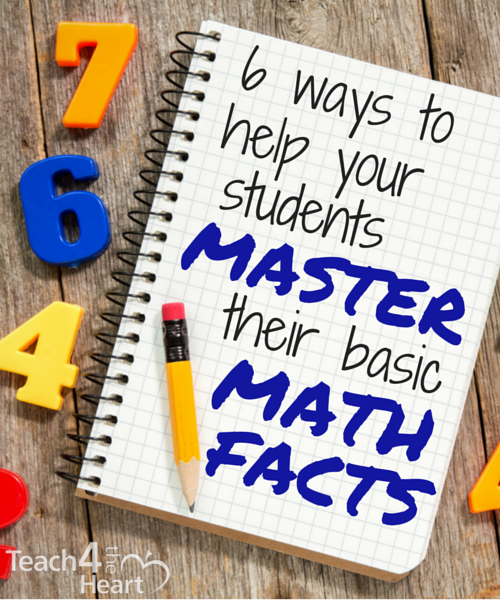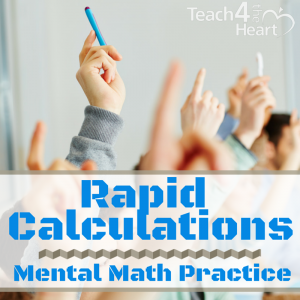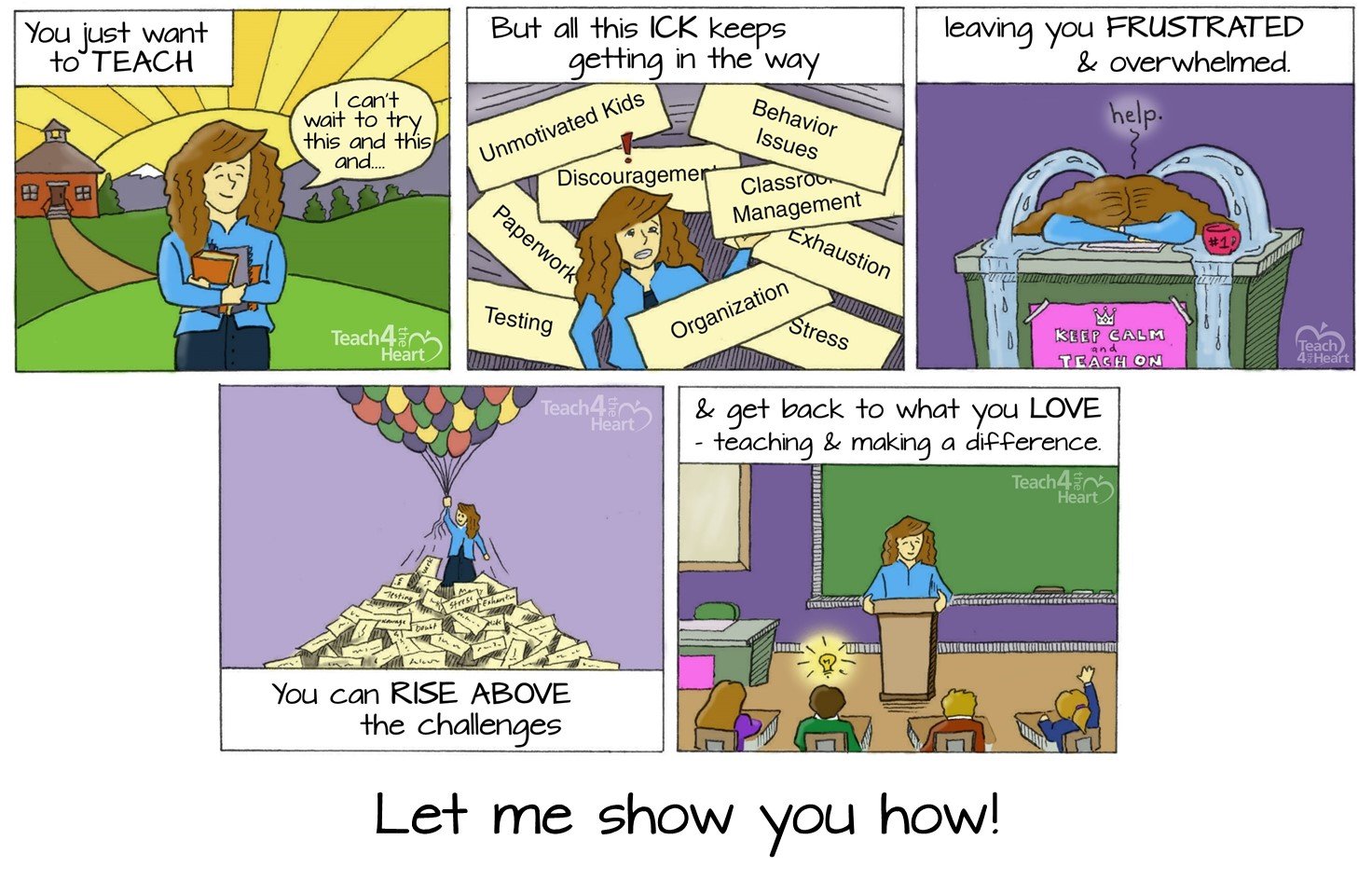If you’re reading this post, I’m assuming we’re on the same page, but just in case let me start by saying that basic math skills are so important.
Okay, I’ve gotta’ say it one more time.
Kids really, really, really need to know their multiplication facts.
Believe me. I taught middle school math for 4 years, and the kids who didn’t know their basic math facts were at a real disadvantage.
Take a problem like this one:
Think you can reduce it without knowing both 42 and 56 can be divided by 7? Not so much…
Anyhow, rant over. If you don’t think multiplication facts are important, leave a comment and maybe I’ll write a separate post about it late, but for now let’s get into the real point – how you can help your students master them in ways that are fun, engaging, and – most importantly – that work.
6 Ways to Help Your Students Master Basic Math Facts
- Say them out loud. When the whole class says multiplication tables out loud, students can’t help but learn them over time. This doesn’t have to be boring. Say them really fast, use different voices, repeat them at random times throughout the day. Mix it up and make it fun, but if you teach grades 3 – 5, say them as many times as you need to for them to learn them.
- Do speed drills. If you’re not familiar with speed drills, basically you give students a paper with a bunch of quick math facts on it and time them to see how long it takes. The goal is to get faster throughout the year. Students generally enjoy these, and you can even use them to sharpen skills in middle school. (You can find lots of great speed drill worksheets here.)
- Don’t let them use calculators for simple problems. If you let students always use calculators, they’re going to become dependent on them. So make it standard practice to do problems by hand unless they involve large numbers. You might get some pushback at first, but they’ll get used to it pretty quickly & you’ll start seeing their skills improve.
- Use rapid calculations. A fun way to review basic math facts is with rapid calculations. You give a stream of calculations that the students must complete in their heads. (For example, you say out loud “6 plus 7 minus 2 times 5 plus 1 divided by 7 equals” and the students reply with – do you know? – 8!) I recently put together a set of these. You can get a sample 4-pack of cards for free here or buy the whole set of 40 cards here.
- Use flash cards (creatively). Flash cards are an awesome way to drill math facts, but standing in front of the class and flipping through is just one way to use them. Allow students to use them in centers (they love playing teacher). Clip them on the whiteboard and have students write the answers underneath. Play around the world. Have a contest. The possibilities are endless.
- Have students quiz each other. Have students quiz each other on the multiplication facts. Give each student a sheet with the multiplication tables. Then have them quiz the person next to them. Just doing this for 1 or 2 minutes a day makes a huge difference.
There are so many more ways to review math facts, but that really is the key, isn’t it – just keep reviewing them. Because, as we all know, repetition is the key to learning.
Did you get your free 4-pack of rapid calculation cards? Click here to grab them now.
How else do you practice math facts in your classroom?





Amen! I teach algebra and geometry and it’s heartbreaking to see kids struggle because they keep messing up their basic facts – sometimes even with calculators! Eventually kids start to realize that grabbing a calculator for the simplest part of the problem is a hassle. Unfortunately if they don’t have their basic facts mastered, it doesn’t end well.
http://obits.mlive.com/obituaries/grandrapids/obituary.aspx?pid=166868326
I adore reading and I think this website got some truly utilitarian stuff on it! .
It’s frustrating beyond measure to work in a school district that downplays ‘rote memory’ of anything! Hello! You hit the nail on the head with your math problem.
Thank-you so much for helping me to battle stupid people.
Love having the kids practice math facts aloud. I try to sneak it in while we are driving sometimes. And speed drills — my daughter actually asks for them!
I teach 2nd grade, so it’s addition and subtraction facts at that stage. We do drills daily, I got an awesome set at TPT that has two 32-problem drills per page, so we don’t use up too much papers/copies that way. I call it “Piranha Math” and the kids litterally BEG for it, because it becomes fun and not a drag. Why Piranha? First we talked about piranhas and how they are notorious predators that can decimate a prey in mere seconds. Then I explained that they could be piranhas in math too. The goal was to “munch away” the math problems as fast as they could! I hand out the drills according to their level (once they pass a set, starting at +0’s they go on to the next). They can’t look at the problems until everyone is ready, and they write their initials on the back while they wait. As soon as everyone is ready, I say “ready, set, MUNCH!” and start a 2-minute timer. In order to not interrupt but give them an idea of the time left, I have a set of laminated numbered piranha cliparts with a magnet that go from smallest to largest. When the timer starts, the number 4 piranha is on the board. When the timer hits 1:30 I put the #3 on top of the #4. At 1:00 it’s the #2, then the #1 at :30. The kids can look up whenever and have an idea of how much time they have left. The drills take 5mn a day and the corrections and keeping track maybe 15.
Hello, just want to share this… http://www.dadsworksheets.com is a good resource too for practicing math facts. It has math fact worksheets, place value problems, addition without carrying, subtraction without borrowing, suites of multiplication tests using various methodologies, fractions and more. Most of the worksheets include detailed answer keys and all worksheets and tools on this site are free.
As a Title 1 Math Intervention teacher, and classroom teacher of 15 years, drill and kill (timed tests) and flashcards are not what is best practice anymore. They are easy and have there place and function, but to really teach those students who do not have fact fluency, legitimate teaching of the facts is the place to start. Those students who struggle need direct instruction and practical practice of the facts before they can be put to memory. If you have a student who struggles with their facts, you need to step back and directly teach the the facts. They will not be able to memorize them if there is no application or connection to them.